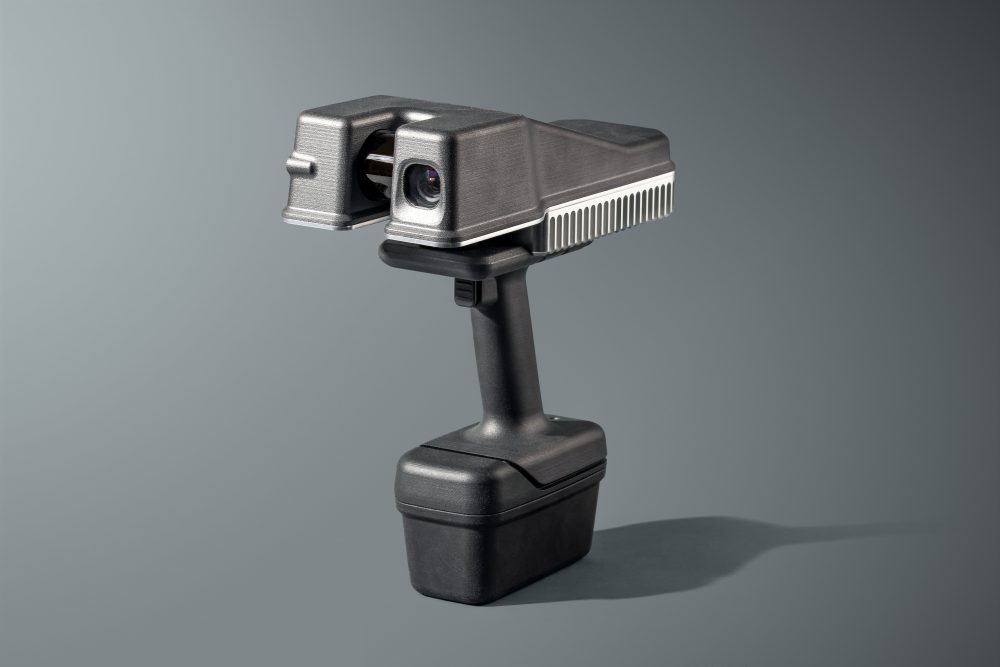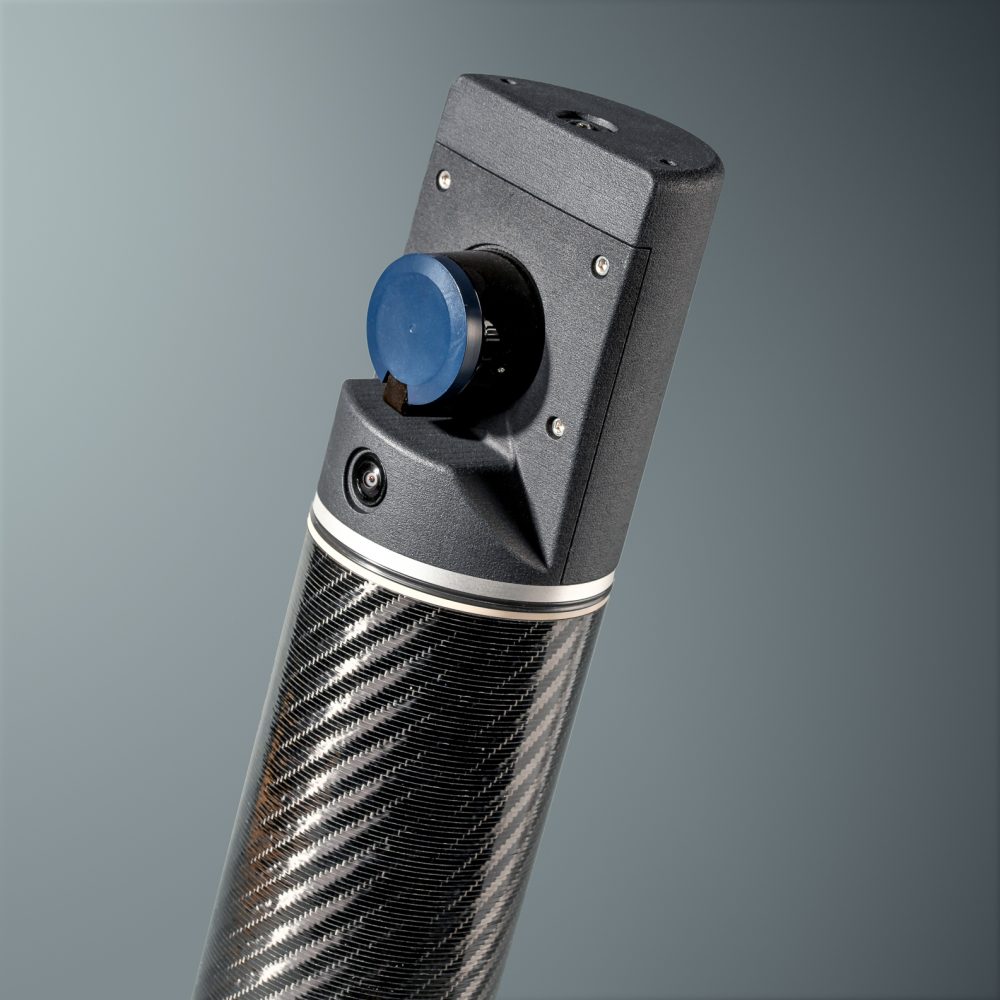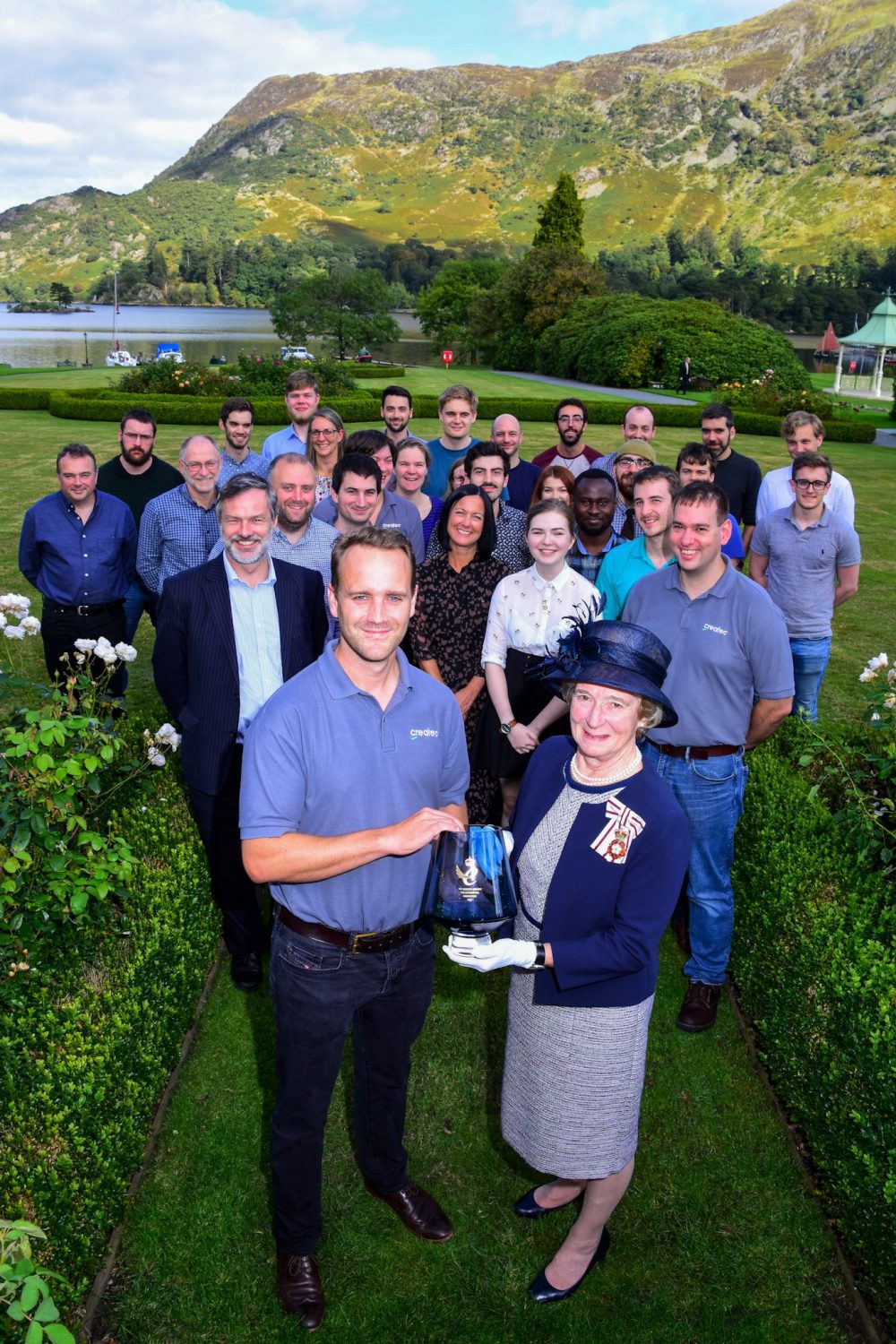Createc wins 2nd Queen’s Award for their complex nuclear innovations
An innovative company known for finding solutions to some of the world’s most complex industrial challenges has been presented with its second Queen’s Award as Createc, which works in civil nuclear, defence, rail, aerospace, security and medical sectors all over the world, has now received two Queen’s Awards in consecutive years.
The Cockermouth-based business, which has expanded to employ 31 people, is the only business in Cumbria, and one of only four in the North-West, which holds two different Queen’s Awards, having last year received the award for International Trade..
Createc was presented with its latest award – The Queen’s Award for Innovation – at its company conference recently for developing a 3D radiation imaging device for mapping nuclear facilities.
The N-Visage® system, developed by Createc over the last 10 years, is a unique approach to mapping radiation in the nuclear industry that works by locating and quantifying the cause of radiation – radioactive contamination – rather than simply measuring the radiation itself.

The N-Visage® system uses concepts and techniques inspired by the medical imaging industry combined with new imaging processes to enable fast and accurate three-dimensional imaging of radio-isotopes.
Medical imaging uses the principle of tomography in which multiple measurements from outside the body are combined to produce an image of what is going on inside the body.
In the nuclear industry, this logic must be reversed as the instrument has to be introduced inside the facility it is used to image, rather than vice versa.
Following this ‘inside out’ idea to its logical conclusion Createc discovered the mathematics behind tomography could also be ‘turned inside out’ to reveal a mathematical principle suggesting a new type of imaging device.
This led Createc to develop the N-Visage® system, a combination of software and hardware that provides unique insights for the managers of nuclear facilities.
Matt Mellor, chief executive of Createc, explained the motivation for developing the innovative technology: “Decommissioning of our nuclear legacy costs the UK taxpayer billions of pounds every year. One of the primary drivers of these costs is the constraint imposed by the presence of radiation. We recognised that to reduce the costs of decommissioning it was essential to provide better data on which to build plans and make decisions.”

The system was first developed for use at Sellafield, the UK’s largest nuclear facility, and is now also used at Dounreay in Scotland and is in regular use across Europe, the United States and Japan.
Matt said: “The site where N-Visage® has made the most difference has been Fukushima Daiichi in Japan after the earthquake and tsunami of 2011.
“Following the explosions at these reactors, the distribution of radioactivity was a complete unknown, posing a huge hazard to health and the environment.
“N-Visage® has been used there for more than five years now and has played a significant role in developing the present understanding of the most inaccessible areas of the site.
“For three years we have been working to develop a version of the system for extreme radiation, and this will be deployed by Mitsubishi inside the reactors later this year to generate data which will be used to plan the critical core decommissioning work.”
Matt says N-Visage®’s first commercial deployment in Sellafield in the UK also saved the nuclear industry millions of pounds.
Using the N-Visage® technology it was quickly established that the planned decommissioning of a redundant fuel handling cell could not proceed in the way that had been assumed.
The fact that Createc was able to discover this after a few weeks of data-driven simulation meant Sellafield saved several years of trial and error to reach this conclusion.

Matt said: “A primary motivation for the development of the N-Visage® system is improving efficiency in nuclear clean-up around the world.
“At Createc we believe that by using exportable technology to solve the challenges we can both reduce the costs to the taxpayer and create a stable, technology-driven local industry that can outlive its original purpose.
“We are extremely proud of the fact that our head office and the bulk of our employees are in Cumbria and that our exports bring sufficient value into the economy to completely offset the cost of our contribution to UK decommissioning and bring millions of pounds per year of additional revenue into the Cumbrian local economy.”
Createc has also won awards for innovation from The Institution for Engineering and Technology (IET), The International Atomic Energy Agency (IAEA) and Nuclear Decommissioning Authority (NDA).















